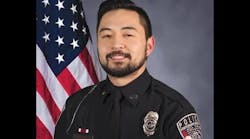SAN JUAN, Puerto Rico — Hurricane Maria ripped apart daily life in Puerto Rico but it hasn’t stopped the crime that has long plagued the poverty-stricken island.
In the Rio Piedras neighborhood, Jessica Rojas was at work last week making sandwiches at a Subway restaurant — a cash-only operation because of the limited power supply — when two young gunmen burst through the door demanding money.
“Esto es un asalto,” one yelled. “This is a robbery!”
Rojas alerted an off-duty cop working security in a backroom. A gunfight erupted. Rojas cowered on the ground as one gunman was gravely wounded and the other escaped. Also wounded in the crossfire were a local prosecutor and his wife who had been dining inside.
“Things here are hot,” said Rojas, a former Hollywood, Fla., resident. “It’s not easy living without water and electricity, and it’s giving a lot of people (opportunity) to rob us. It’s getting worse. We need more police.”
More than a month after Hurricane Maria wrecked the island, Puerto Rico’s overwhelmed police force of 13,000 officers is struggling to contain crime, just as before — but now with longer shifts, against emboldened criminals and on streets cloaked in darkness.
“It’s easier to burglarize — there’s no alarms, no phone systems. It’s dark. The delinquents are taking advantage of the crisis that Puerto Rico is in,” said Puerto Rico Police Officer Heriberto Soto, during a night patrol Tuesday that included calls for a robbery shooting, homeless men torching the outsides of stolen cables to steal the copper inside and a high-speed car chase of suspected gunmen.
And the future for law enforcement on the island is bleak. The department has lost about 4,000 officers in the past five years and, because of the island’s economic crisis, cannot count on recruits. Hundreds of U.S. Army soldiers, outside law enforcement officers and private security guards are helping — temporarily — but robberies, murders and drug dealing have resumed at levels that would seem outrageous in mainland states but are normal here.
Since the hurricane, there have been at least 34 homicides. Crime has largely returned to pre-storm levels, said Puerto Rico Police Superintendent Hector Pesquera. Puerto Rico’s crime rate has been largely “out of sight, out of mind” for years in the eyes of mainland authorities, who have given the island’s law-enforcement community precious few resources, he said.
“We were in really dire shape before the storm,” Pesquera said of his staffing levels. “Now, certainly, we’re not going to be in any better position. In fact, it’s going to be the opposite.”
Crime in Puerto Rico has been exacerbated by a $74 billion debt crisis that left state institutions in shambles, hundreds of thousands unemployed and many residents leaving the island for the U.S. mainland. Puerto Rico’s finances have been supervised by a federal oversight board since 2016.
In the past, the island’s police department has also been marked by allegations of misconduct and occasional arrests for corruption. In 2011, before Pesquera was hired, the U.S. Department of Justice found a “long-standing” pattern of civil rights violations that were “pervasive and plague all levels” of the department.
Adding to the volatile mix: Puerto Rico has become a key transit point for the illegal drug trade, with cocaine and other drugs flowing through the island, fueling violence in cities and towns.
In April, federal authorities busted a $4 million drug trafficking ring based at San Juan’s international airport that agents said involved facility staff members, restaurant workers and airline employees who used garbage chutes and bathrooms to smuggle drugs onto planes. The group was led by a suspected Puerto Rican kingpin who kept a tiger as a pet, leading the authorities to nickname him “Tony the Tiger.”
An island of 3.4 million people, Puerto Rico recorded 670 homicides last year, a marked increase from 2015, although still down from the peak of 1,164 in 2011. In contrast, Miami-Dade County, with a population of 2.6 million people, had 235 homicides in 2016.
Many more people are victims of assaults, muggings and burglaries.
Rio Piedras once had more than 60 officers on a shift. These days, even as the cops work 12-hour emergency shifts, the number of patrol officers on duty is typically 25 or so. Squad cars are old and lack laptops and dash-cams used by many patrol officers on the mainland.
———
©2017 Miami Herald
Visit Miami Herald at www.miamiherald.com
Distributed by Tribune Content Agency, LLC.



